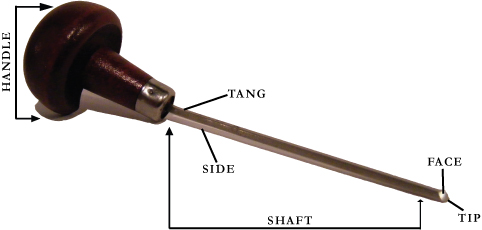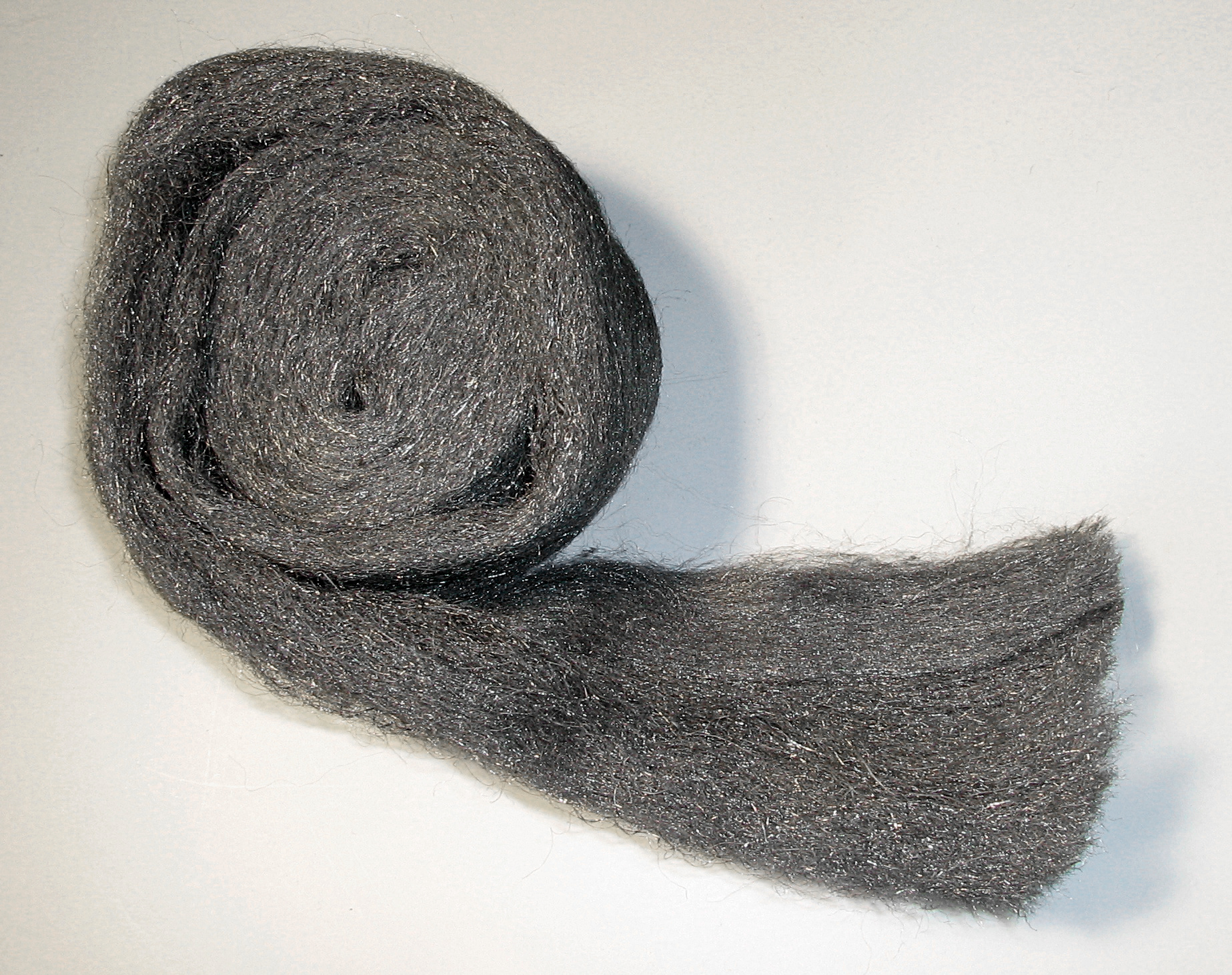|
Wax Carving
{{unreferenced, date=April 2012 Wax carving is the shaping of wax using tools usually associated with machining: rotary tools, saws, files and burins or gravers. Actual knives can be used and most certainly are, but the hardness of the material is such that they are not the ideal tool, generally. To carve wax, the proper size and shape of block or tube is chosen, in the preferred hardness, and cut to a rough size, as needed. Then the design is generally drawn or laid out on that, and saws, files or machine tools are used to work the wax into a finished product. The wax is easily taken to a fine finish in the end using a bit of nylon stocking or steel wool. After the wax product is finished, it may be molded or used in the lost wax casting process to create a final cast product. Casting waxes There are a wide variety of wax types used in the lost wax casting process. Generally they fall into three main types, soft, hard and injection waxes. Injection waxes are made and inte ... [...More Info...] [...Related Items...] OR: [Wikipedia] [Google] [Baidu] |
Machining
Machining is a process in which a material (often metal) is cut to a desired final shape and size by a controlled material-removal process. The processes that have this common theme are collectively called subtractive manufacturing, which utilizes machine tools, in contrast to '' additive manufacturing'' (3D printing), which uses controlled addition of material. Machining is a part of the manufacture of many metal products, but it can also be used on other materials such as wood, plastic, ceramic, and composite material. A person who specializes in machining is called a machinist. A room, building, or company where machining is done is called a machine shop. Much of modern-day machining is carried out by computer numerical control (CNC), in which computers are used to control the movement and operation of the mills, lathes, and other cutting machines. This increases efficiency, as the CNC machine runs unmanned therefore reducing labour costs for machine shops. History and ter ... [...More Info...] [...Related Items...] OR: [Wikipedia] [Google] [Baidu] |
Burin (engraving)
A burin ( ) is a steel cutting tool used in engraving, from the French ''burin'' (cold chisel). Its older English name and synonym is graver. Etymology The term ''burin'' refers to a tool used by engravers that has a thin, pointed blade and it used to etch or cut. The first known use of the word dates back to France in the mid-1600s when the term was coined for the tool we know today. Design The burin consists of a rounded handle shaped like a mushroom, and a tempered steel shaft, coming from the handle at an angle, and ending in a very sharp cutting face. The most ubiquitous types have a square or lozenge face, a high-end repertoire has many others. A tint burin consists of a square face with teeth, to create many fine, closely spaced lines. A stipple tool allows for the creation of fine dots. A flat burin consists of a rectangular face, and is used for cutting away large portions of material at a time. The earliest uses of a burin come from the Lower Paleolithic era, th ... [...More Info...] [...Related Items...] OR: [Wikipedia] [Google] [Baidu] |
Nylon Stocking
Stockings (also known as hose, especially in a historical context) are close-fitting, variously elastic garments covering the leg from the foot up to the knee or possibly part or all of the thigh. Stockings vary in color, design, and transparency. Today, stockings are primarily worn for fashion and aesthetics, usually in association with mid-length or short skirts. History Historically, even though the word ''sock'' is at least as ancient in origin, what men normally wore were often referred to as stockings, probably especially when referring to longer hose. The word ''stock'' used to refer to the bottom "stump" part of the body, and by analogy the word was used to refer to the one-piece covering of the lower trunk and limbs of the 15th century—essentially tights consisting of the ''upper-stocks'' (later to be worn separately as knee breeches) and ''nether-stocks'' (later to be worn separately as ''stockings''). (See Hose.) Before the 1590s, stockings were made of woven c ... [...More Info...] [...Related Items...] OR: [Wikipedia] [Google] [Baidu] |
Steel Wool
Steel wool, also known as iron wool, wire wool or wire sponge, is a bundle of very fine and flexible sharp-edged steel filaments. It was described as a new product in 1896.''Iron Age'', Vol. LVII, p.871, cited by ''Journal of the Iron and Steel Institute'', Volume 50, Issue 2, p.48/ref> It is used as an abrasive in finishing and repair work for polishing wood or metal objects, cleaning household cookware, cleaning windows, and sanding surfaces. Steel wool is made from low-carbon steel in a process similar to broaching, where a heavy steel wire is pulled through a toothed die that removes thin, sharp, wire shavings. Uses Steel wool is commonly used by woodworkers, metal craftsmen, and jewelers to clean and smooth working surfaces and give them shine. However, when used on oak, remaining traces of iron may react with tannins in the wood to produce blue or black iron stain, and when used on aluminum, brass, or other non-ferrous metal surfaces may cause after-rust which will du ... [...More Info...] [...Related Items...] OR: [Wikipedia] [Google] [Baidu] |
Molded
Molding (American English) or moulding (British and Commonwealth English; see spelling differences) is the process of manufacturing by shaping liquid or pliable raw material using a rigid frame called a mold or matrix. This itself may have been made using a pattern or model of the final object. A mold or mould is a hollowed-out block that is filled with a liquid or pliable material such as plastic, glass, metal, or ceramic raw material. The liquid hardens or sets inside the mold, adopting its shape. A mold is a counterpart to a cast. The very common bi-valve molding process uses two molds, one for each half of the object. Articulated molds have multiple pieces that come together to form the complete mold, and then disassemble to release the finished casting; they are expensive, but necessary when the casting shape has complex overhangs. Piece-molding uses a number of different molds, each creating a section of a complicated object. This is generally only used for larger a ... [...More Info...] [...Related Items...] OR: [Wikipedia] [Google] [Baidu] |
Lost Wax Casting
Lost-wax casting (also called "investment casting", "precision casting", or ''cire perdue'' which has been adopted into English from the French, ) is the process by which a duplicate metal sculpture (often silver, gold, brass, or bronze) is cast from an original sculpture. Intricate works can be achieved by this method. The oldest known examples of this technique are approximately 6,500-year-old (4550–4450 BC) and attributed to gold artefacts found at Bulgaria's Varna Necropolis. A copper amulet from Mehrgarh, Indus Valley civilization, in Pakistan, is dated to circa 4,000 BC. Cast copper objects, found in the Nahal Mishmar hoard in southern Israel, which belong to the Chalcolithic period (4500–3500 BC), are estimated, from carbon-14 dating, to date to circa 3500 BC. In Other examples from somewhat later periods are from Mesopotamia in the third millennium BC. Lost-wax casting was widespread in Europe until the 18th century, when a piece-moulding process came to predomi ... [...More Info...] [...Related Items...] OR: [Wikipedia] [Google] [Baidu] |
Plastic
Plastics are a wide range of synthetic or semi-synthetic materials that use polymers as a main ingredient. Their plasticity makes it possible for plastics to be moulded, extruded or pressed into solid objects of various shapes. This adaptability, plus a wide range of other properties, such as being lightweight, durable, flexible, and inexpensive to produce, has led to its widespread use. Plastics typically are made through human industrial systems. Most modern plastics are derived from fossil fuel-based chemicals like natural gas or petroleum; however, recent industrial methods use variants made from renewable materials, such as corn or cotton derivatives. 9.2 billion tonnes of plastic are estimated to have been made between 1950 and 2017. More than half this plastic has been produced since 2004. In 2020, 400 million tonnes of plastic were produced. If global trends on plastic demand continue, it is estimated that by 2050 annual global plastic production will reach over 1 ... [...More Info...] [...Related Items...] OR: [Wikipedia] [Google] [Baidu] |
Wood
Wood is a porous and fibrous structural tissue found in the stems and roots of trees and other woody plants. It is an organic materiala natural composite of cellulose fibers that are strong in tension and embedded in a matrix of lignin that resists compression. Wood is sometimes defined as only the secondary xylem in the stems of trees, or it is defined more broadly to include the same type of tissue elsewhere such as in the roots of trees or shrubs. In a living tree it performs a support function, enabling woody plants to grow large or to stand up by themselves. It also conveys water and nutrients between the leaves, other growing tissues, and the roots. Wood may also refer to other plant materials with comparable properties, and to material engineered from wood, or woodchips or fiber. Wood has been used for thousands of years for fuel, as a construction material, for making tools and weapons, furniture and paper. More recently it emerged as a feedstock for the ... [...More Info...] [...Related Items...] OR: [Wikipedia] [Google] [Baidu] |
Waxes
Waxes are a diverse class of organic compounds that are lipophilic, malleable solids near ambient temperatures. They include higher alkanes and lipids, typically with melting points above about 40 °C (104 °F), melting to give low viscosity liquids. Waxes are insoluble in water but soluble in nonpolar organic solvents such as hexane, benzene and chloroform. Natural waxes of different types are produced by plants and animals and occur in petroleum. Chemistry Waxes are organic compounds that characteristically consist of long aliphatic alkyl chains, although aromatic compounds may also be present. Natural waxes may contain unsaturated bonds and include various functional groups such as fatty acids, primary and secondary alcohols, ketones, aldehydes and fatty acid esters. Synthetic waxes often consist of homologous series of long-chain aliphatic hydrocarbons ( alkanes or paraffins) that lack functional groups. Plant and animal waxes Waxes are synthesized ... [...More Info...] [...Related Items...] OR: [Wikipedia] [Google] [Baidu] |
Sculpture Materials
Sculpture is the branch of the visual arts that operates in three dimensions. Sculpture is the three-dimensional art work which is physically presented in the dimensions of height, width and depth. It is one of the plastic arts. Durable sculptural processes originally used carving (the removal of material) and modelling (the addition of material, as clay), in stone, metal, ceramics, wood and other materials but, since Modernism, there has been an almost complete freedom of materials and process. A wide variety of materials may be worked by removal such as carving, assembled by welding or modelling, or moulded or cast. Sculpture in stone survives far better than works of art in perishable materials, and often represents the majority of the surviving works (other than pottery) from ancient cultures, though conversely traditions of sculpture in wood may have vanished almost entirely. However, most ancient sculpture was brightly painted, and this has been lost. [...More Info...] [...Related Items...] OR: [Wikipedia] [Google] [Baidu] |






